
Top 5 Reasons Why Cotton Is Bad for Hiking
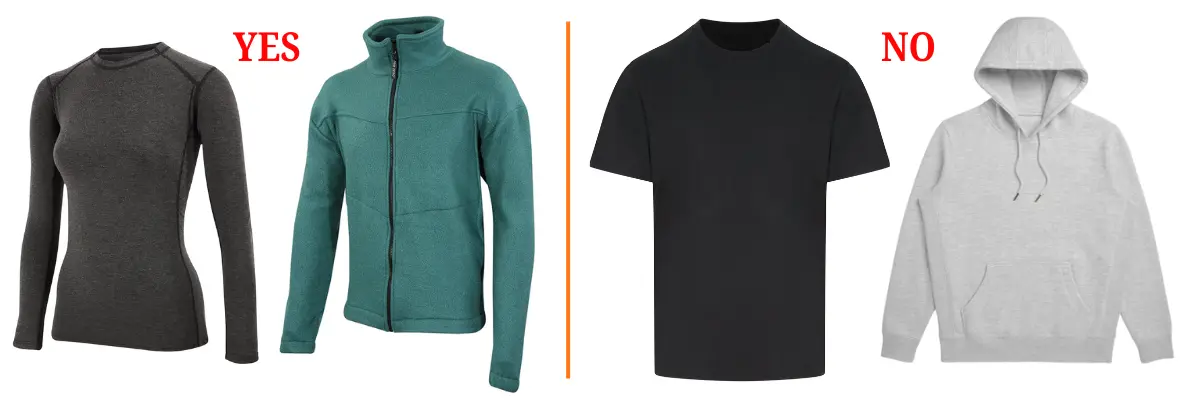
Table of Contents
Let me ask you a question. Whenever you are planning for a hike or any mountainous adventure, what comes first to mind? Is it the trek route, trekking gear, checking the weather, or maybe the destination itself? However, have you ever thought of packing clothes made of cotton for hiking? Probably not.
When gearing up for a hike, you get prepared for the challenges like altitude, terrain, weather, and all the logistics. But there’s one thing that even seasoned hikers make the mistake of: wearing cotton clothes.
It may seem like it’s not much of a problem at first. But let me tell you, cotton for hiking is a recipe for discomfort and regret. It may be best for a short, relaxing journey around town or at home, but not for the long, tiring, straining, and all-sweaty hikes.

Here are the top 5 reasons why you should avoid cotton for hiking, especially in remote villages and secluded regions of Nepal.
Cotton Holds Moisture Like a Sponge
One of the major issues with cotton for hiking is that it absorbs moisture like a sponge. Whether it’s your sweat or get caught in a light drizzle, cotton clothes absorb all the moisture and do not allow it to evaporate quickly.
Though you might feel cooler when wearing these wet clothes, if you wear them for an extended period of time, this can lead to hypothermia. Especially in higher altitudes, high winds on a trek, and chill winds can lead to skin irritation and even fatigue.
It Dries Really Slowly
In your usual daily life, you might have experienced cotton clothes taking longer to dry than others. Similarly, whether it is from rain, sweat, river crossings, or you wash it, once it gets wet, it stays wet.
Wearing these wet clothes increases friction between the skin and fabric, causing painful chafing and blisters. You’ll also feel heavier and colder, which drains more energy.
Overall, on a multi-day hike, wet cotton clothes take a longer time to dry, especially when not drying overnight. So, you might not be able to use that gear and have to carry it, further increasing the luggage’s weight.
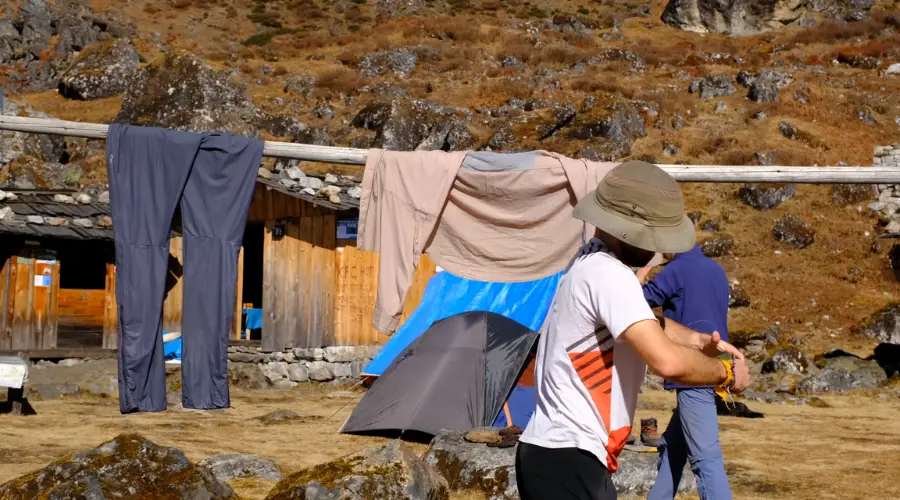
Cotton Causes Chafing
Wearing damp cotton while hiking or getting wet due to sweat or any other reason can cause chafing in areas like your thighs, underarms, and around your backpack straps.
When cotton gets wet, it sticks to your skin and makes you uneasy while trekking. This increases friction and uneasiness with every step.
If it were a two-day hike, it would be understandable. But on a long trek like Manaslu Circuit Trek, Everest Three Passes Trek, or Upper Dolpo Trek, which lasts for more than 2 weeks to almost a month, it’s quite troublesome.
You do not want walk with raw, painful skin that’s not only uncomfortable but could become infected. So, better choose technical fabrics, maybe go for merino wool, to reduce friction and move with your body.
No Warmth When Wet
The biggest disadvantage of cotton for hiking is its inability to provide insulation when wet. Materials like wool or synthetic fibre retain warmth and provide warmth, even when damp.
On the other hand, cotton traps moisture and gets cold and pulls away body warmth. This can lead to the risk of getting a cold, tonsillitis, and uncontrolled shivering. In the worst-case scenario, you might suffer from hypothermia and stop hiking, or even need a helicopter evacuation.
It is critical in alpine environments or during rapid weather changes. Even in the summer, you might feel it won’t matter if you wear cotton. However, we suggest you avoid it.
Cotton Increases the Weight of Your Luggage
It’s important to pay attention when packing for Himalayan treks like Everest Base Camp and Annapurna Circuit. You might not find gears in such remote villages. Even if you find them, it’s quite expensive.
So, pack wisely. With every extra pound added, the treks get challenging. Cotton clothes are heavy and bulky. Now, imagine a soaked t-shirt, hoodie, or pair of jeans. It weighs several times as much as when dry.
Performance hiking gear is designed in such a way that they are lightweight and compressible. But the cottons are heavier and take up more space in your pack. Not to forget, this increased weight slows you down and tires you out faster.
So, if you ask if I should pack any cotton for hiking, our answer is a big no.
What Should You Wear Instead?
Now that you know why cotton is bad for hiking, you must be scratching your head, thinking, “What should I wear instead?” However, don’t get worried; we’ve got you covered.
It’s always better to look for materials that wick moisture, dry quickly, and provide insulation even when wet. These performance-centric clothes can help regulate your body temperature, keep you comfortable, and prevent common hiking injuries.
Some of the top fabric options for hiking are:
Merino Wool: Naturally odour-resistant, moisture-wicking, and warm even when damp. Ideal for base layers and socks.
Polyester: Lightweight, durable, and fast-drying. Great for shirts, liners, and activewear.
Nylon: Often used in hiking pants and outer layers. Tough, breathable, and water-resistant.
Synthetic Blends: Designed to combine comfort with technical performance for a balanced, all-season option.
How to Layer Clothing for a Safe and Comfortable Hike?
Layering according to season is essential when hiking in the mountains. It ensures the hike’s safety and comfort, especially in changing weather.
Starting with a base layer, it is crucial that you use clothes made from moisture-wicking fabric like merino wool or polyester. It keeps you warm and sweats off your skin.
The next layer is the mid-layer insulation layer. Fleece or lightweight insulated jackets are perfect to trap body heat for warmth.
Finally, the top outer layer. They are a windproof and waterproof outer shell to protect you from rain, snow and strong winds.
Avoid using cotton in any of these layers.
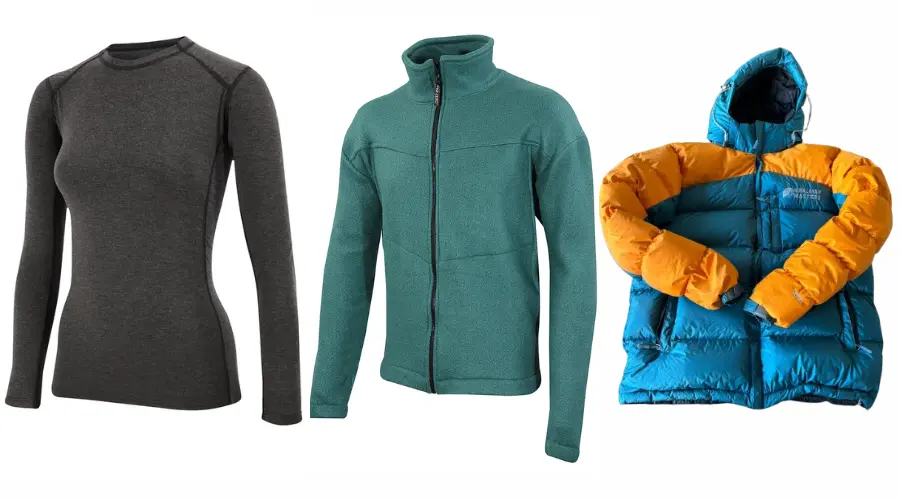
Conclusion: Ditch Cotton, Wear Smarter
Choosing what to wear for a hike is about more than just fashion; it’s a matter of safety, endurance, and preparedness. The outdoors can be unpredictable, and your clothing needs to adapt as quickly as the weather.
Cotton for hiking isn’t a good choice as it holds moisture, causes chafing, offers no insulation, and adds unnecessary weight.
So, before your next adventure, take a moment to rethink your wardrobe. Leave the cotton behind and invest in gear that’s made to move with you, protect you, and perform under pressure. Your body and your trail experience will thank you for it.
Want to know more?
Speak to an Expert





Sandip Dhungana
Nepal 🇳🇵
Whatsapp: +977-9823636377


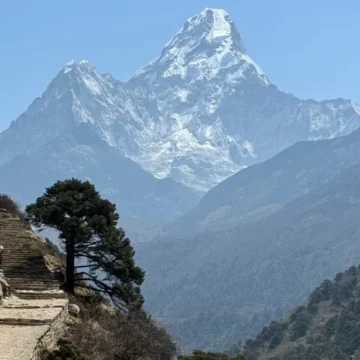


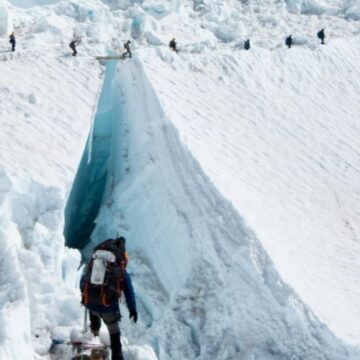



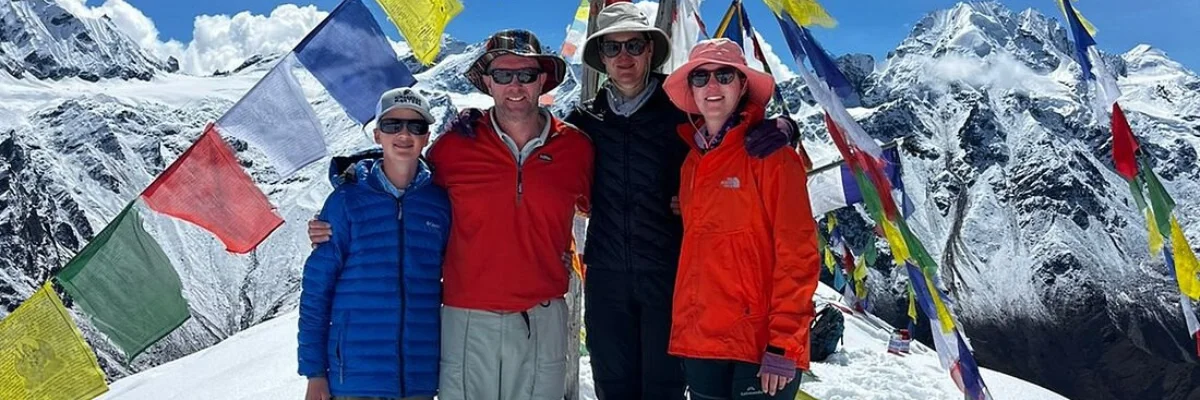


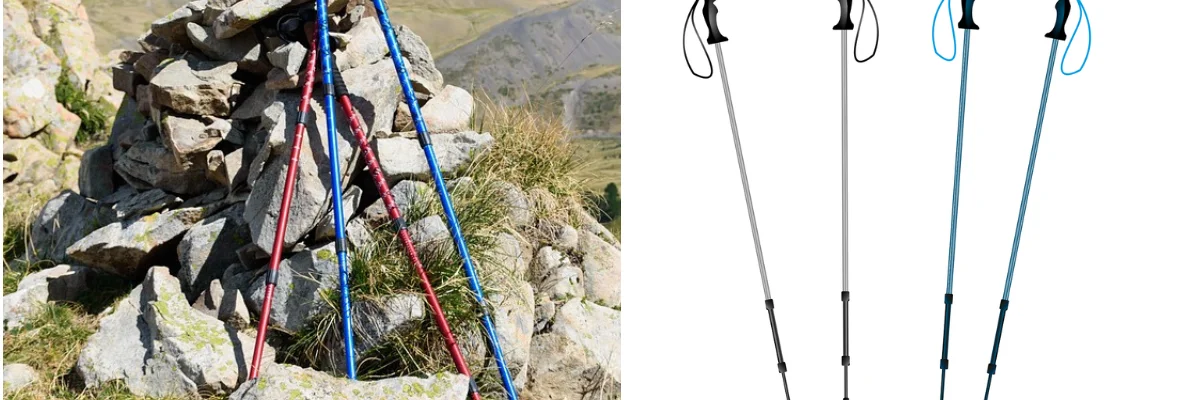














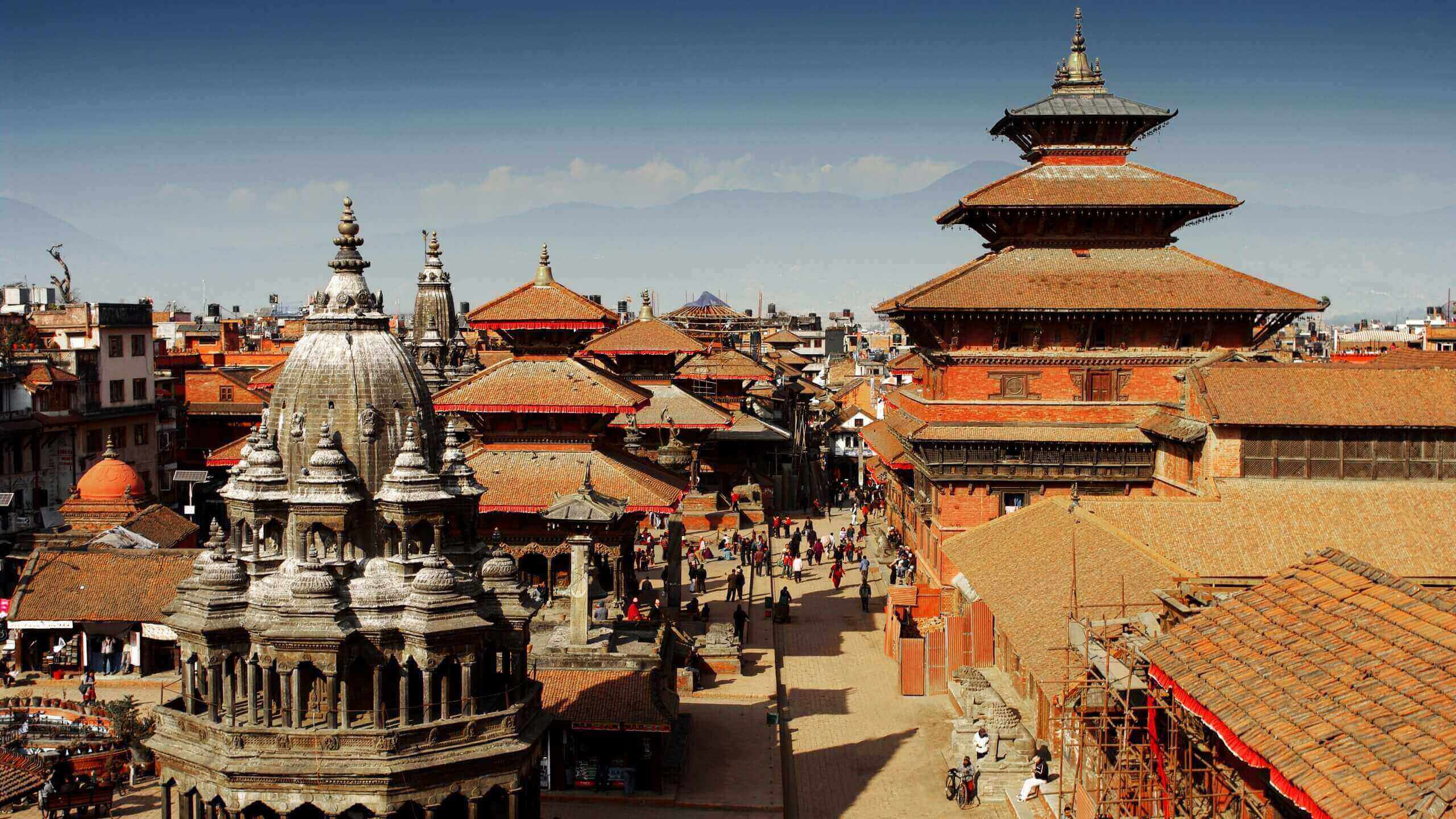

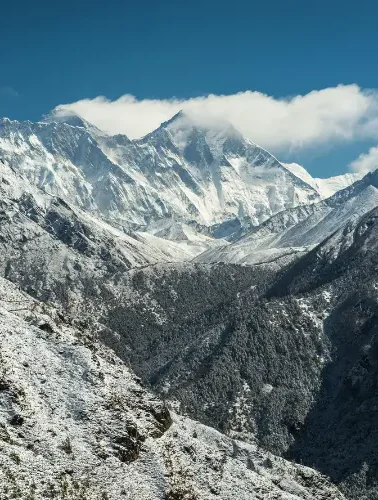
Leave Your Comment